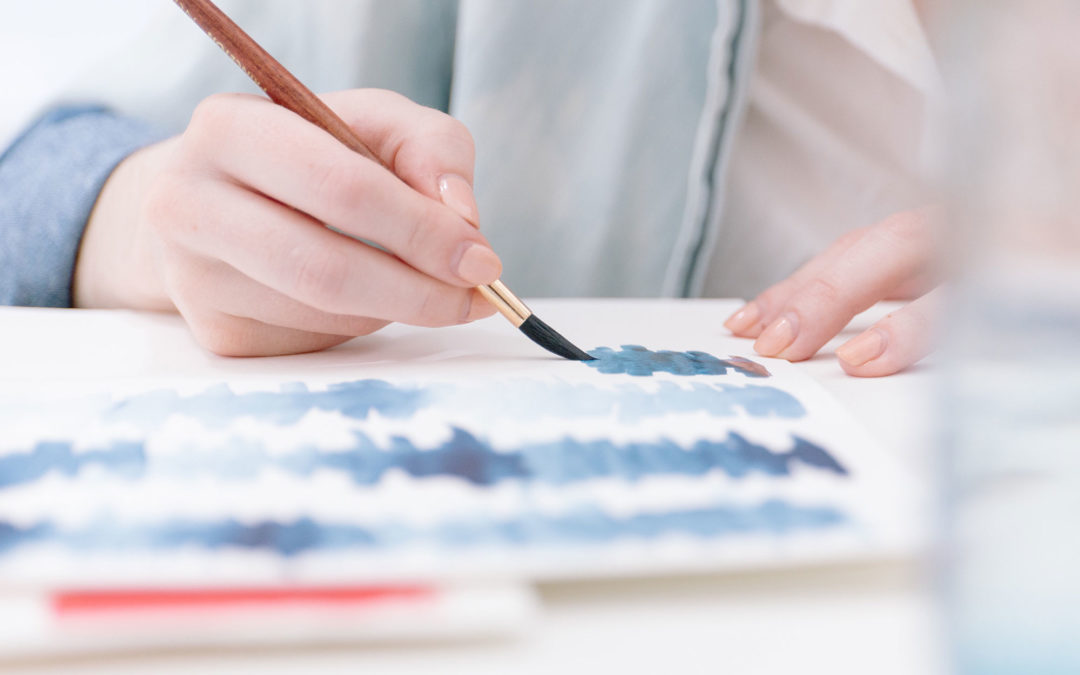
Creativity at work—that unique idea that changes a customer relationship for the better, or saves the business unneeded expenses immediately—is essential for a company’s growth and competitiveness. For most organizations, creativity doesn’t necessarily mean coming up with the next killer product; it could mean solving a difficult problem through a unique or unexpected insight. Indeed, creativity is ongoing and innovation is the result.
Scientists have long studied what makes some people more creative than others. While many of us might think that only painters and poets are inherently creative, everyone can generate unique and usable ideas through these simple, scientifically-proven methods.
Take a Walk Outside
You might have read that walking on a treadmill can help you if you’re feeling stuck in a problem-solving rut. But taking a walk outside is even better.
In a study conducted by Marily Oppezzo and Daniel L. Schwartz, researchers at Stanford University, subjects who walked outside generated more novel ideas than those who walked on treadmills inside and more than those who were rolled in a wheelchair outside. They posit that taking a walk is a simple way to both increase creativity and physical activity by opening up the “free flow of ideas.”(2)
Oppezzo and Schwartz also suggest that walking triggers our associative memory, churning up various ideas that we already have, but might not yet have connected.
Constrain Your Ideas
If you’ve ever opened a new Word document, you might have felt a little intimidated by the wide open possibilities of that blank page. But sometimes the most innovative solutions lie in limitation. When seeking creative insight to a problem, take something away and give yourself some key requirements.
When marketing professors C. Page Moreau and Darren W. Dahl asked subjects to design a children’s toy, they found that putting both requirements and restrictions on the toys’ design encouraged more creative processing and produced the most novel and useful ideas.(3)
You might also want to shorten your deadlines. In another study, subjects faced with a time constraint generated more creative solutions than those allowed more time.(4)
By constraining our ideas, we can’t just fall back on our habitual responses, focusing our brains to come up with more unique and original ideas.
Let it Simmer
While time pressure can be useful in some circumstances, other—maybe more complex— problems, may benefit from, you might be best served by letting your ideas sit for a bit. A number of studies have shown that setting a problem aside, known as incubation, is incredibly beneficial for coming up with novel ideas.
A short period of incubation could be as simple as allowing your mind to wander for a few minutes. This is the essence of the powerful mindfulness technique known as “open monitoring.” A team of scientists at the University of California, Santa Barbara, found that that their subjects’ creativity was greater after taking a break while doing an undemanding task than even taking a break that involved doing nothing at all.(5)
A longer period could be leaving the project and getting some much-needed sleep. Sleep has also been proven to inspire creative insight, cognitive flexibility, and enhance remote associations, according to a team of researchers in Germany.(6)
Indeed, in a survey of research on the link between incubation and insight, behavioral scientist Simone M. Ritter notes that there are over 5000 articles on Google Scholar, and that empirical research has shown that setting an idea aside does help creativity.(7)
Make Creativity a Habit
When we think of habits, we might imagine those things that we do without thinking, such as brushing our teeth or tying our shoelaces. But generating novel ideas regularly requires that we make creative thinking a habit.
Psychologist Robert Sternberg suggests that it’s easier to come up with new ideas when we are willing to carve out regular and recurring time to do so. His research has also found that creative people “routinely approach problems in novel ways,” and that they habitually seek out ways to look at problems that others might not, they take risks and have courage to stand up for their beliefs, and strive to overcome obstacles.(8)
Indeed, Vlad Glăveanu, Associate Professor of Psychology and Communication at the University of Denmark, says that his research suggests that intentionally setting regular time aside for novel thinking prevents us from falling back to our “habitual, automatic responses.”(9)
So, even though it might seem counterintuitive, if you’re looking for a way to be more innovative in your daily life, try scheduling the same amount of time every day or every week to do some out-of-the-box thinking… even if it’s just taking a 10-minute walk during your lunch hour.
—
(1) Amabile, Teresa. Creativity in Context. Boulder, CO: Westview Press, 1996.
(2) Oppezzo, Marily, and Daniel L. Schwartz. “Give Your Ideas Some Legs: The Positive Effect of Walking on Creative Thinking.” Journal of Experimental Psychology: Learning, Memory, and Cognition 40:4 (2014): 1142.
(3) Moreau, C. Page, and Darren W. Dahl. “Designing the Solution: The Impact of Constraints on Consumers’ Creativity.” Journal of Consumer Research 32:1 (2005): 13-22.
(4) Burroughs, James E., and David Glen Mick. “Exploring Antecedents and Consequences of Consumer Creativity in a Problem-Solving Context.” Journal of Consumer Research 31:2 (2004): 402-411.
(5) Baird, Benjamin, et al. “Inspired by Distraction: Mind Wandering Facilitates Creative Incubation.” Psychological Science 23:10 (2012):1117–1122.
(6) Wagner, Ullrich, et al. “Sleep Inspires Insight.” Nature 427:6972 (2004): 352-355.
(7) Ritter, Simone M., and Ap Dijksterhuis. “Creativity—The Unconscious Foundations of the Incubation Period.” Frontiers in Human Neuroscience 8:215 (2014): 1-10.
(8) Sternberg, Robert J. “Creativity as a Habit.” Creativity: A Handbook for Teachers, 3-25. Singapore: World Scientific Publishing Co., 2007.
(9) Glăveanu, Vlad Petre. “Habitual Creativity: Revising Habit, Reconceptualizing Creativity.” Review of General Psychology 16:1 (2012): 78-92.


